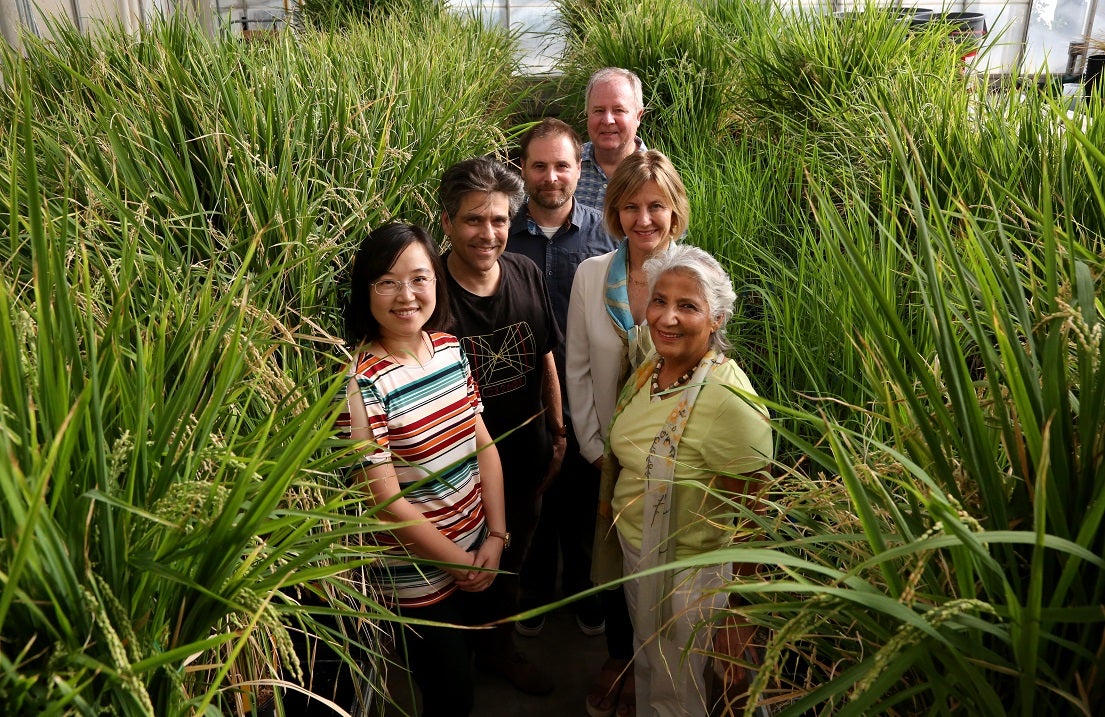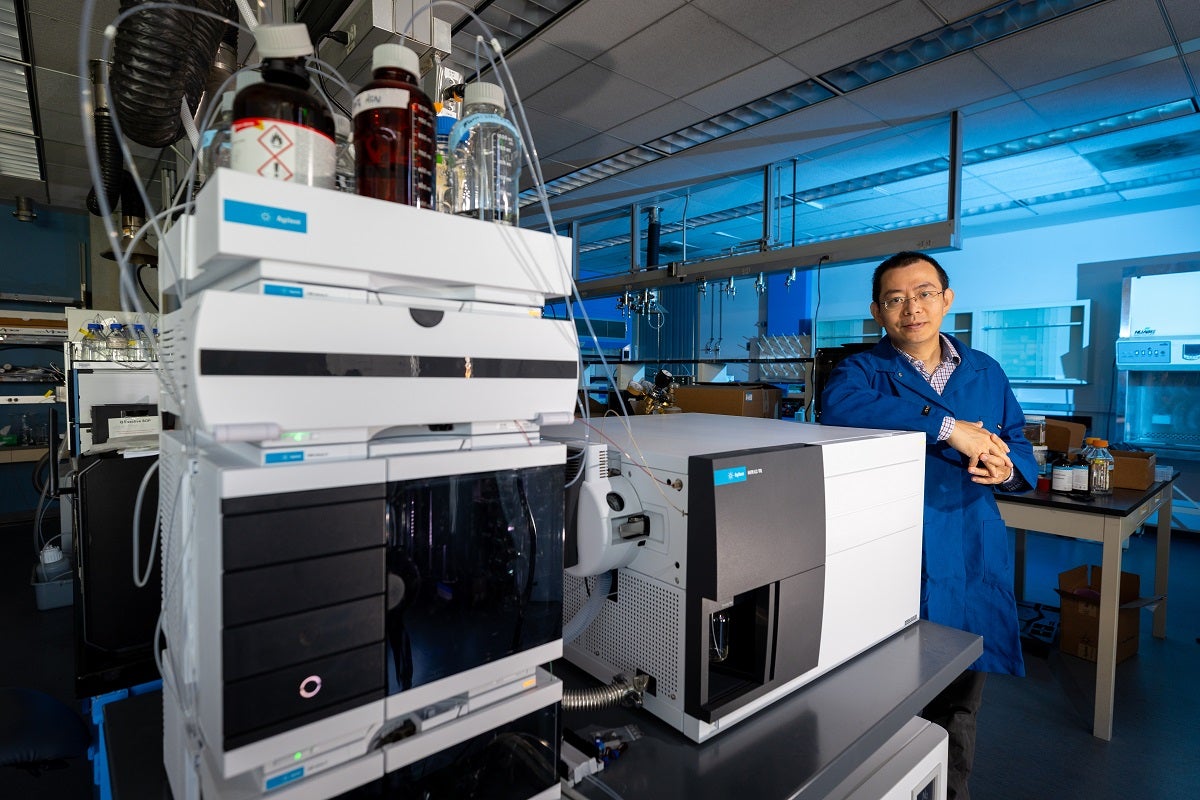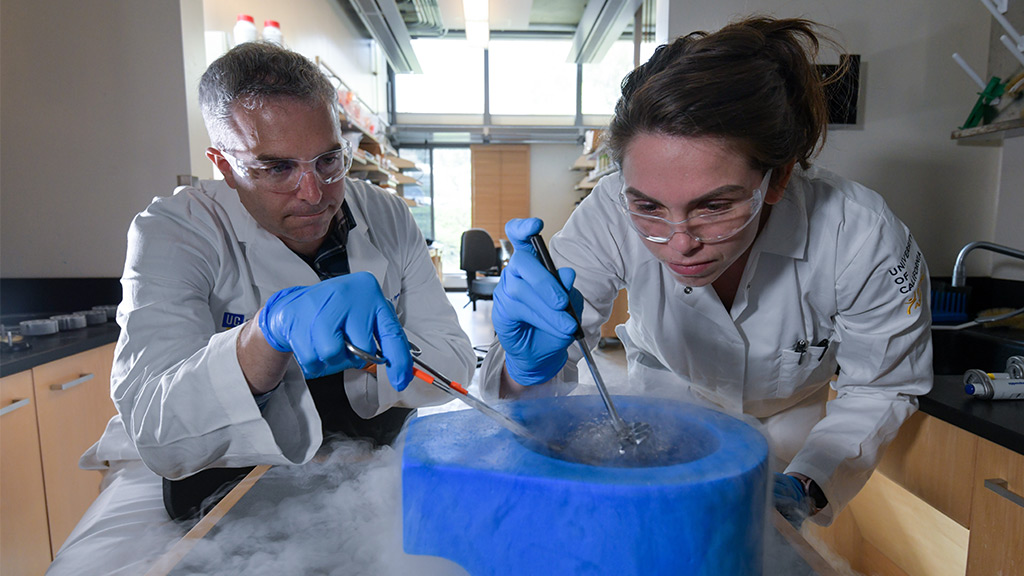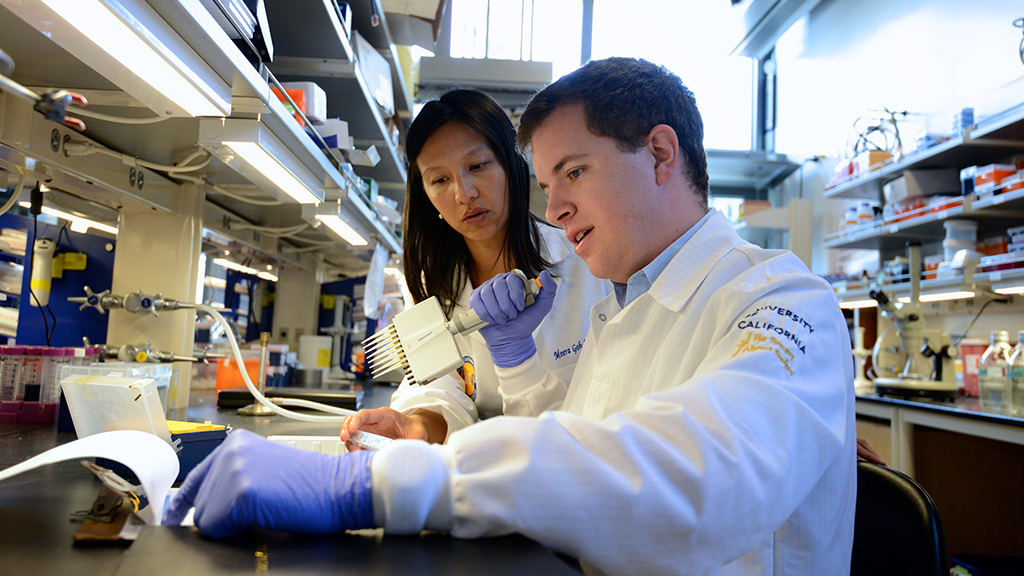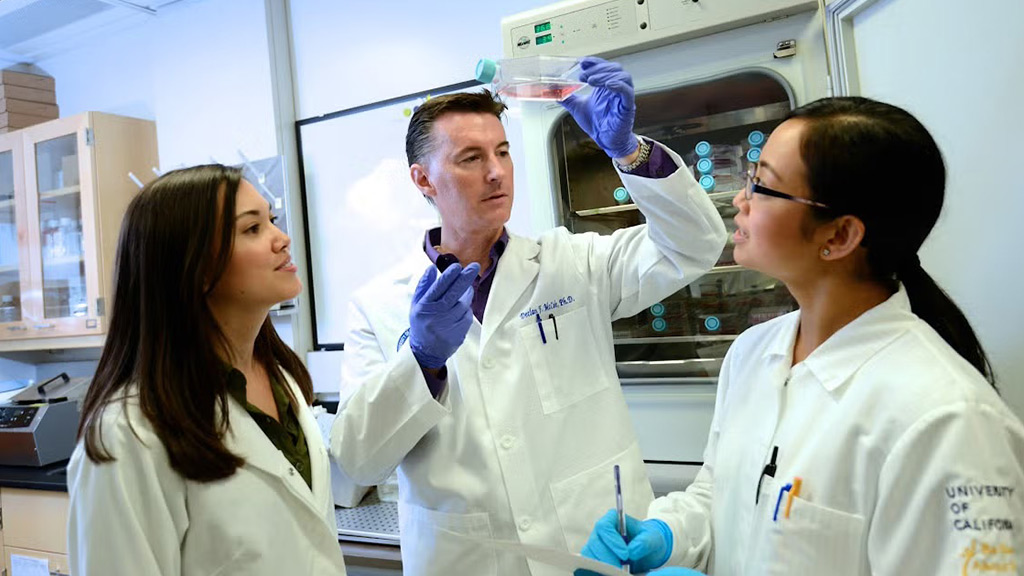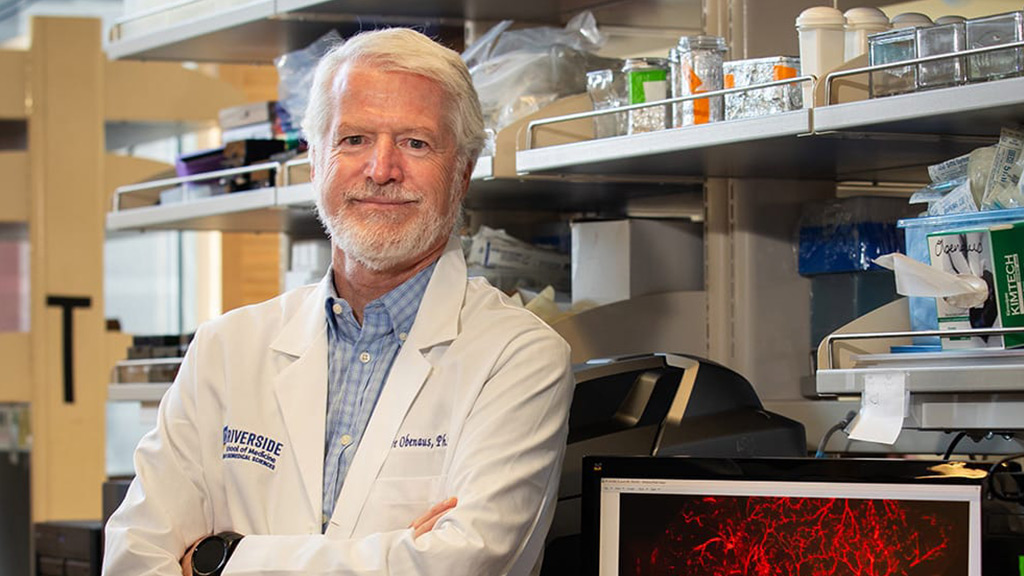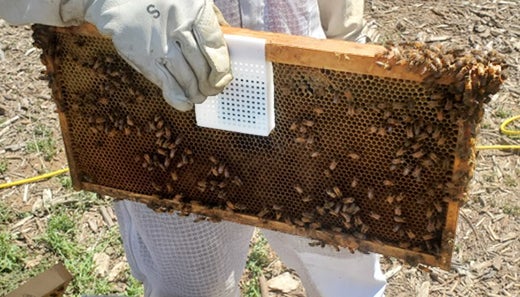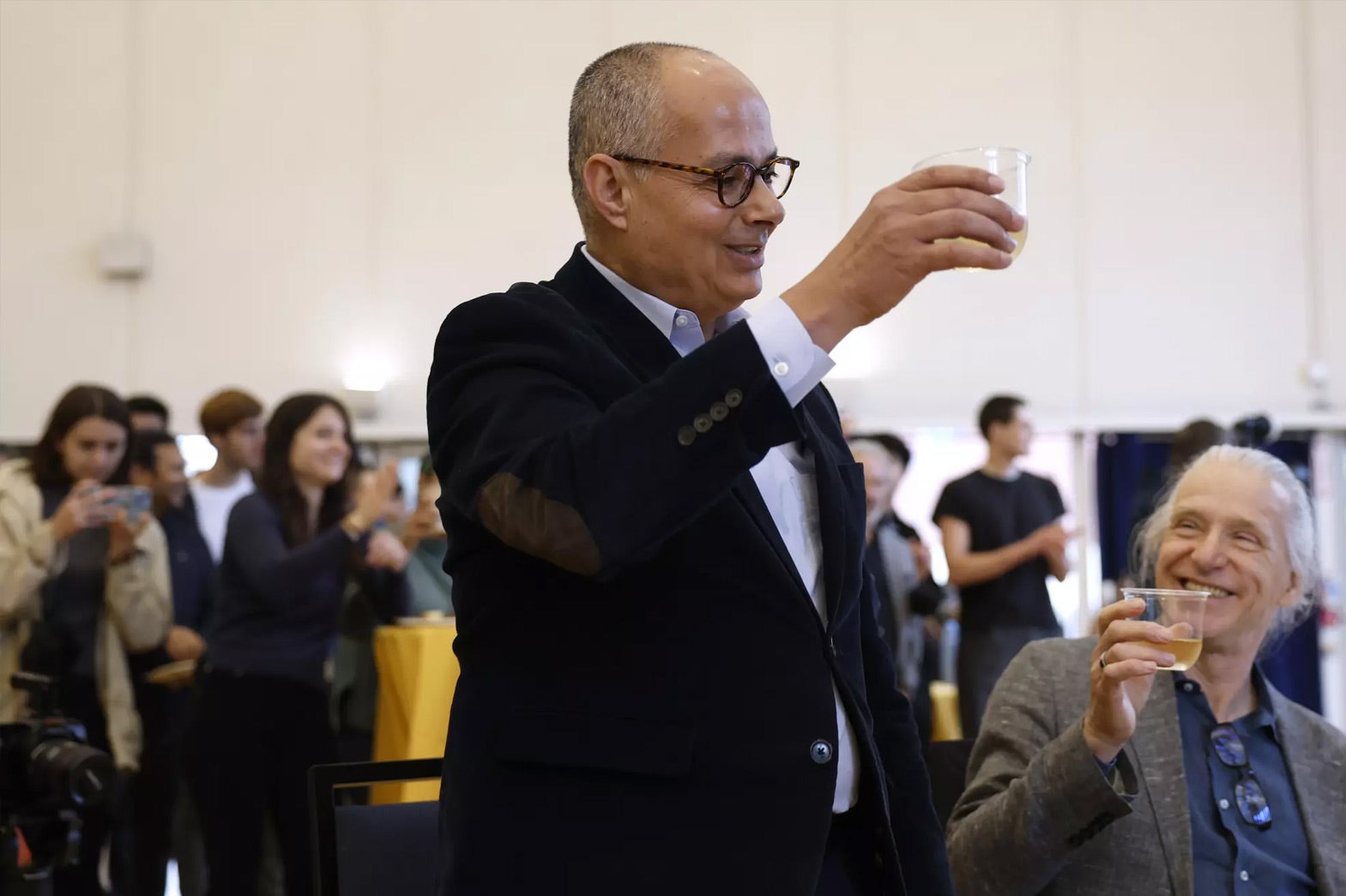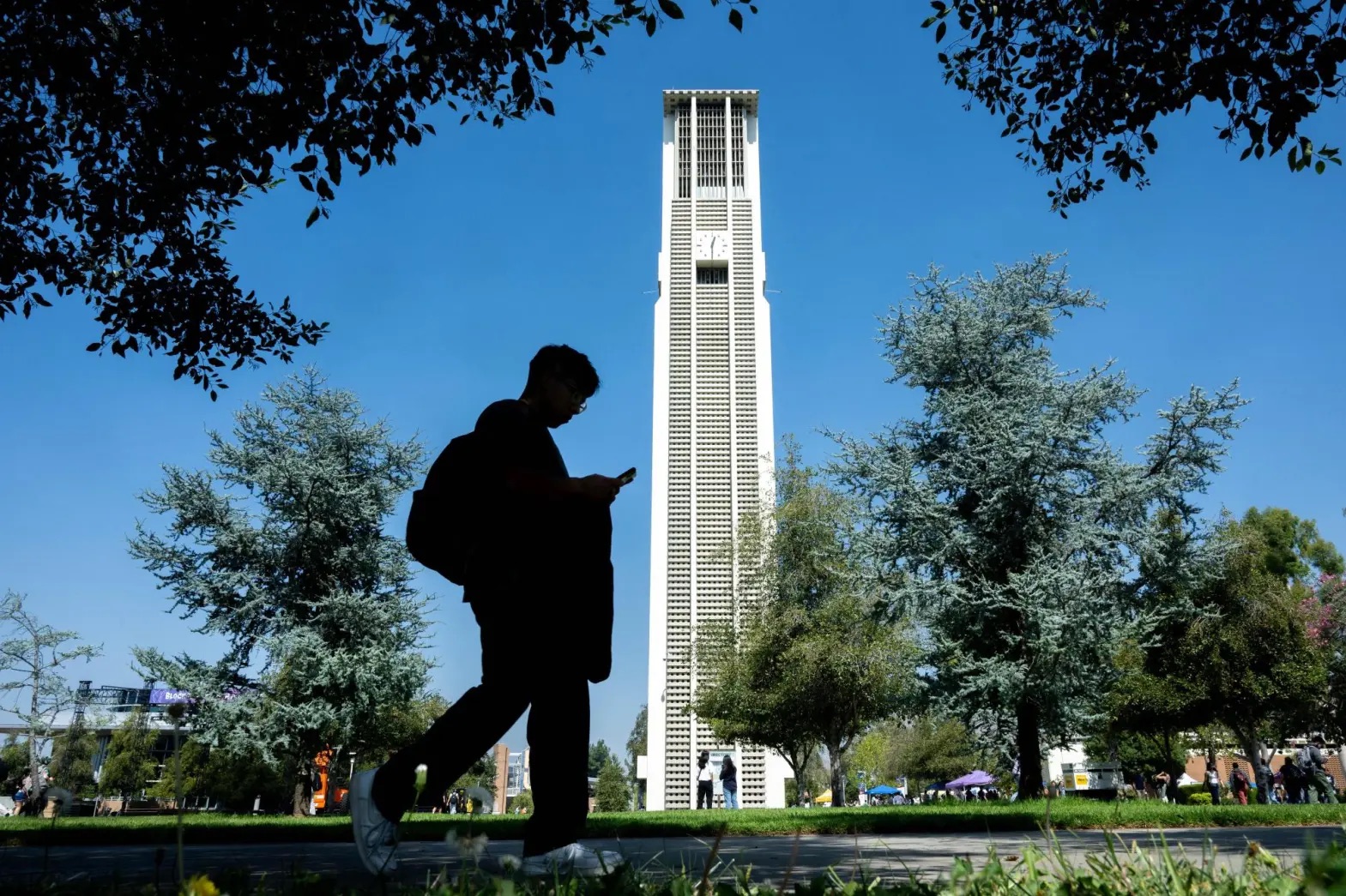As one of the nation’s leading research universities, UC Riverside makes world-changing — and life-saving — breakthroughs on the strength of federal research dollars. With critical NIH funding, UCR research is identifying strategies to address health challenges such as obesity, inflammatory bowel disease, traumatic brain injury, epilepsy, Parkinson’s, and Alzheimer’s. Our scientists are creating more resilient, disease-resistant food crops. And they use federal defense funding to address a virus that threatens populations in much of the world – including U.S. troops stationed abroad.
Below are some of the ways UC Riverside researchers are putting federal dollars to work.
UCR Scientists Are Breeding a Better Tasting Pomegranate
UCR researchers are working to diversify the pomegranate market by cultivating new varieties that are sweeter, and have softer seeds than the popular "Wonderful" variety.
Impacts of UCR research
Chasing Alzheimer’s
Interdisciplinary UCR Aging Institute researchers are pursuing a range of options to better understand, slow, and even halt Alzheimer’s Disease. These include studies on inflammation, sleep disorders, predictors in young people, and a noninvasive brain stimulation method.
Flood-tolerant rice
The lab of Julia Bailey-Serres, a professor of genetics, helped identify a gene that enables rice to survive complete submergence. The breakthrough, supported by the National Science Foundation, has led the International Rice Research Institute to report 10 million farmers now grow the rice in their flood-prone fields.
Safer mosquito repellant
Mosquito repellents are a must-have, given the propensity of mosquitoes to carry life-altering — even deadly — diseases including West Nile virus, Lyme disease, malaria, and Zika. A novel mosquito repellant developed by Professor Anand Ray behind an NIH grant is safe, long-lasting, cost-effective, and even has a pleasant smell.
Destroying ‘forever chemicals’
Jinyong Liu, professor of chemical & environmental engineering, aided by funding from the NSF and the DoD, has developed technologies to pre-treat and destroy PFAS substances, or "forever chemicals," found in products like non-stick cookware and food packaging.
Leading citrus’ fight for survival
Citrus greening disease results in bitter and worthless citrus fruits. It comes from the Asian citrus psyllid. With $11 million in grants from the USDA, UC Riverside researchers are fighting the disease on three fronts: in the rootstocks; in the shoots and branches, and with a peptide that can move throughout the tree.
Vaccine to end a deadly virus
With NIH funding, 30-year U.S. military veteran Dr. Scott Pegan and his team are helping develop a vaccine against the worldwide tick-borne Crimean Congo Hemorrhagic Fever that can protect humans in as little as three days with one shot.
Better understanding obesity
Obesity impacts 40% of Americans, causing chronic diseases such as cardiovascular disease, diabetes, and increase risk for infection. In her NIH-funded research, Dr. Meera Nair seeks cells that may be targeted against obesity.
Reducing IBD discomfort
Inflammatory bowel disease affects three million adults in the U.S., and symptoms include diarrhea, fatigue, weight loss, and stomach cramps. Dr. Declan McCole and his team have identified a gene that – when targeted – can lead to reduced symptoms.
Understanding brain injury
Dr. Andre Obenhaus studies the consequences of traumatic brain injury, including whether it may be a factor in developing or accelerating Alzheimer’s symptoms. His lab’s research relies on federal and university funds to pay for expensive MRI and PET equipment to track changes in the brain.
Gene-editing creates space tomatoes
With funding from NASA, Robert Jinkerson and his colleagues used gene-editing technology to develop short tomato plants that have the potential to be grown in vertical farms and on the International Space Station. The technology reduced the size of tomato plants without significantly reducing the size and yield of the fruit.
Hope for honeybee colonies
With USDA funds, a UC Riverside computer science team has developed a heat sensor called the Electronic Bee-Veterinarian that could revolutionize commercial beekeeping by reducing colony losses and lowering labor costs. The technology uses low-cost heat sensors to predict when hive temperatures may reach dangerous levels.
Continued learning brings cognitive benefits
In two NSF-funded studies, UCR psychologist Rachel Wu and her colleagues found that older adults who challenge themselves to learn new things are less likely to experience loneliness or depression, even during times of major upheaval.
News & Commentary
Science funding and immigration fuel America’s innovation. They’re at risk
President Milliken highlights the essential role of the University of California in supporting California’s and the nation’s economies. He emphasizes the important partnership between the federal government and universities that has established the U.S. as a global leader in science, technology, and medicine.
Slashing NIH funding means slashing innovative research
In an opinion article, UC Riverside Chancellor-Emeritus Kim Wilcox speaks to the model of federal research funding that has for 70 years made the United States the worldwide standard for innovation.
Frequently Asked Questions
-
How does the federal government fund research?
- Through “direct costs,” which covers the scientists, lab supplies, equipment, and travel needed to conduct a government-funded project.
- Via “facilities and administrative (F&A) costs,” which are essential costs that are not tied to a single project. That can include lab space and support personnel, such as those who manage the paperwork to maintain facilities, to keep the lights on, and to pay for personnel to support the project and ensure compliance to many federal requirements.
-
What research costs have been targeted by the federal government?
Facilities and Administrative (F&A) costs have been targeted. These are the essential costs required to conduct research.
-
With the NIH funding that has been targeted by the federal government, how much does UCR stand to lose?
UCR could lose up to $12 million this year from its loss of NIH funding. That figure could climb to more than $20 million if other federal agencies such as NSF begin cuts.
-
What percentage of UCR’s research costs is F&A?
F&A stands for Facilities and Administrative costs. The percentage for F&A is 57% of which the A part is capped at 26%. Above 26%, the university pays for any additional administrative costs, even though much of those costs are tied to federal rules and regulations to which the university is required to comply.

Speak Up for Science!
Science makes our lives better. Now it’s at risk. Join us in asking Congress to reject drastic cuts to research.
By the Numbers: Total UCR Research Expenditures
$214M
total UCR research expenditures
$41M
Dept. of Health and Human Services, which includes the National Institutes of Health
$33.1M
National Science Foundation
$19.6M
Dept. Of Agriculture
$11.6M
Dept. Of Defense
$9.8M
Dept. Of Energy





